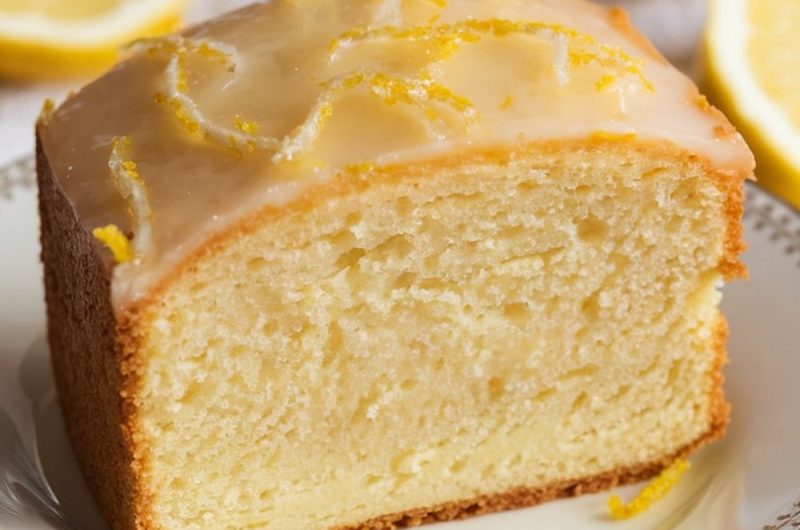You know what? Lemon pound cake is classic for a reason: that rich, buttery texture and that citrus flavor. it’s just perfect. Today, I’ll go through all the details of how to whip up that treat, from how to make a moist and flavorful cake to that amazingly delicious lemon glaze that just tops it.
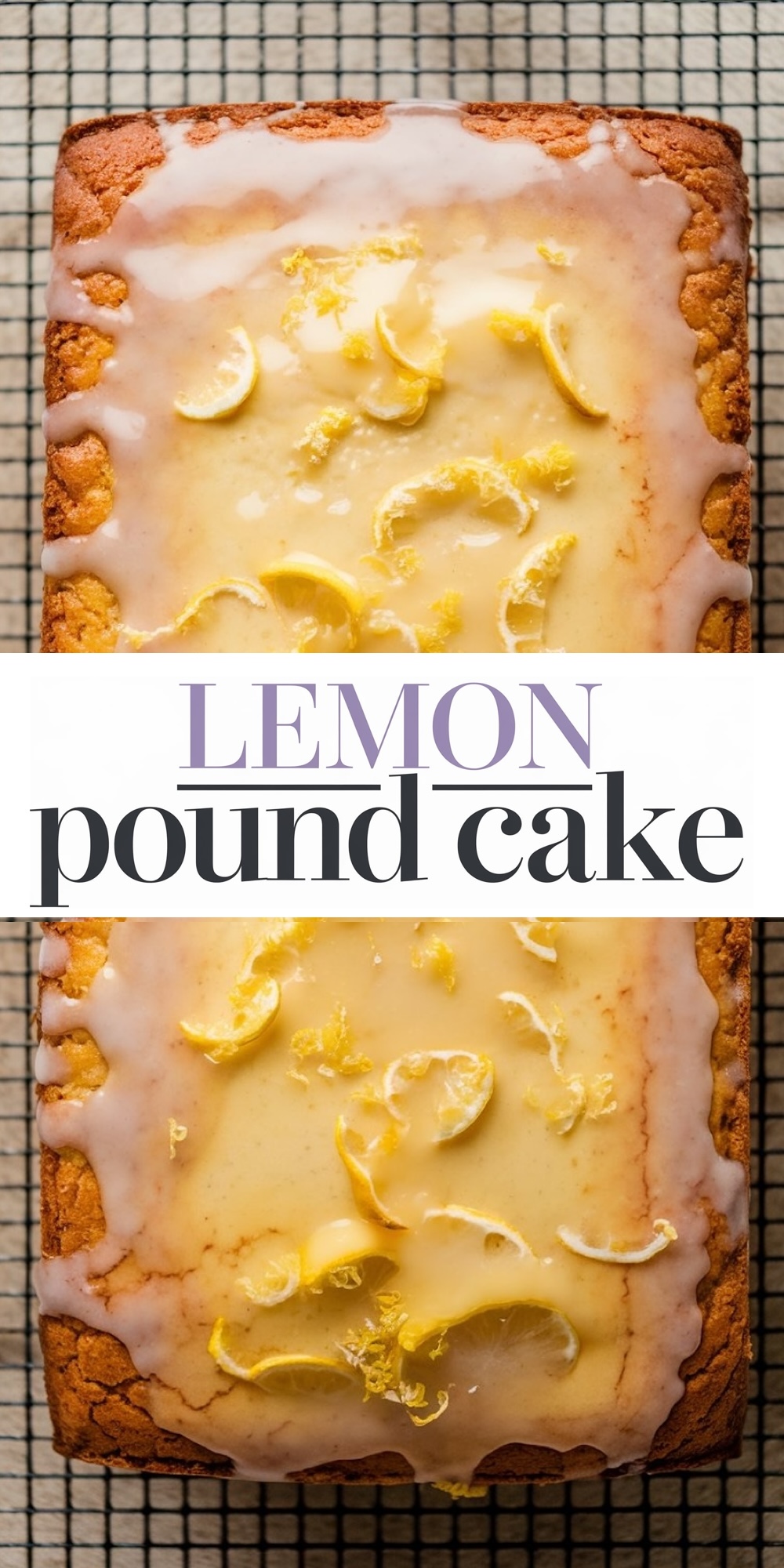
Why Lemon Pound Cake Is a Timeless Dessert
This lemon pound cake kind of leads me on a tasty voyage down memory lane. My first recollections are of baking in the kitchen with my grandma, who always felt a little lemon was the secret ingredient in anything that made one happy.
The smell of lemon zest and vanilla makes everything in your house just a bit happier. That actual glaze and buttery cake seem to come together and make it absolutely a memory each and every time I whip it out. This cake is like a nod-a testament-to those cozy moments and a shoutout to how great simple flavors can be when they’re executed well.
Gathering Your Ingredients for Lemon Pound Cake
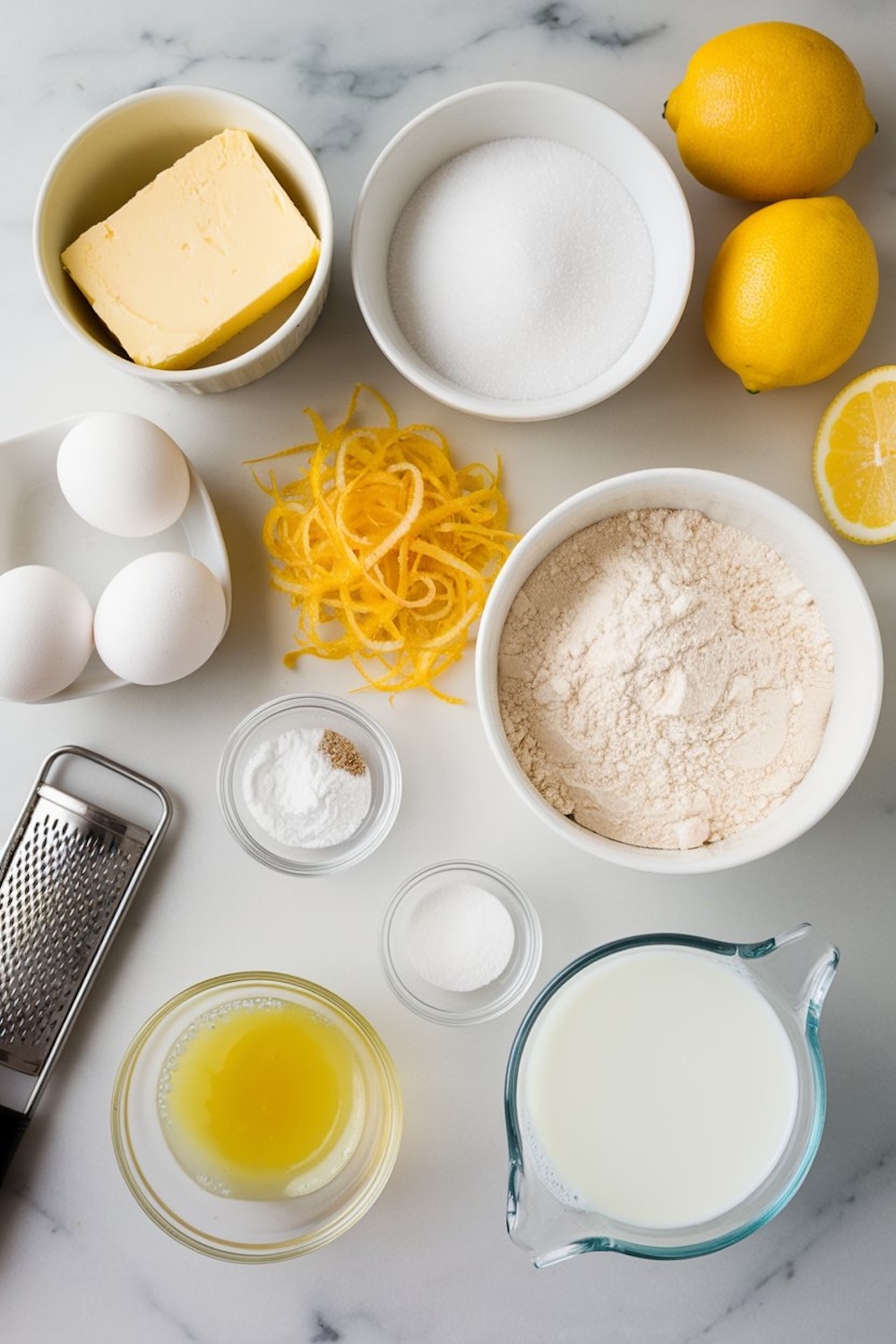
The perfect lemon pound cake-just with good ingredients and taken care of. What you need:
- Unsalted Butter: Room temperature butter is essential here. Softened butter combines effortlessly with sugar, allowing air to be incorporated into the batter, which results in a soft, tender crumb.
- Granulated Sugar: Sugar does more than just sweeten; it adds moisture and helps the cake achieve a delicate texture.
- Eggs: Room temperature eggs are crucial, as they blend smoothly with other ingredients, leading to a uniform batter.
- All-Purpose Flour: This is the foundation of your cake. A light whisking of the flour before measuring helps prevent dense, over-packed flour that can weigh down the cake.
- Lemon Zest and Juice: The zest provides an intense lemony aroma and flavor, while the juice adds a subtle brightness without making the cake overly tart.
- Vanilla Extract: A small amount of vanilla rounds out the flavors, balancing the lemon without overpowering it.
- Milk: Whole milk brings moisture and richness, giving the cake a luscious texture.
Preparing the Lemon Pound Cake Batter
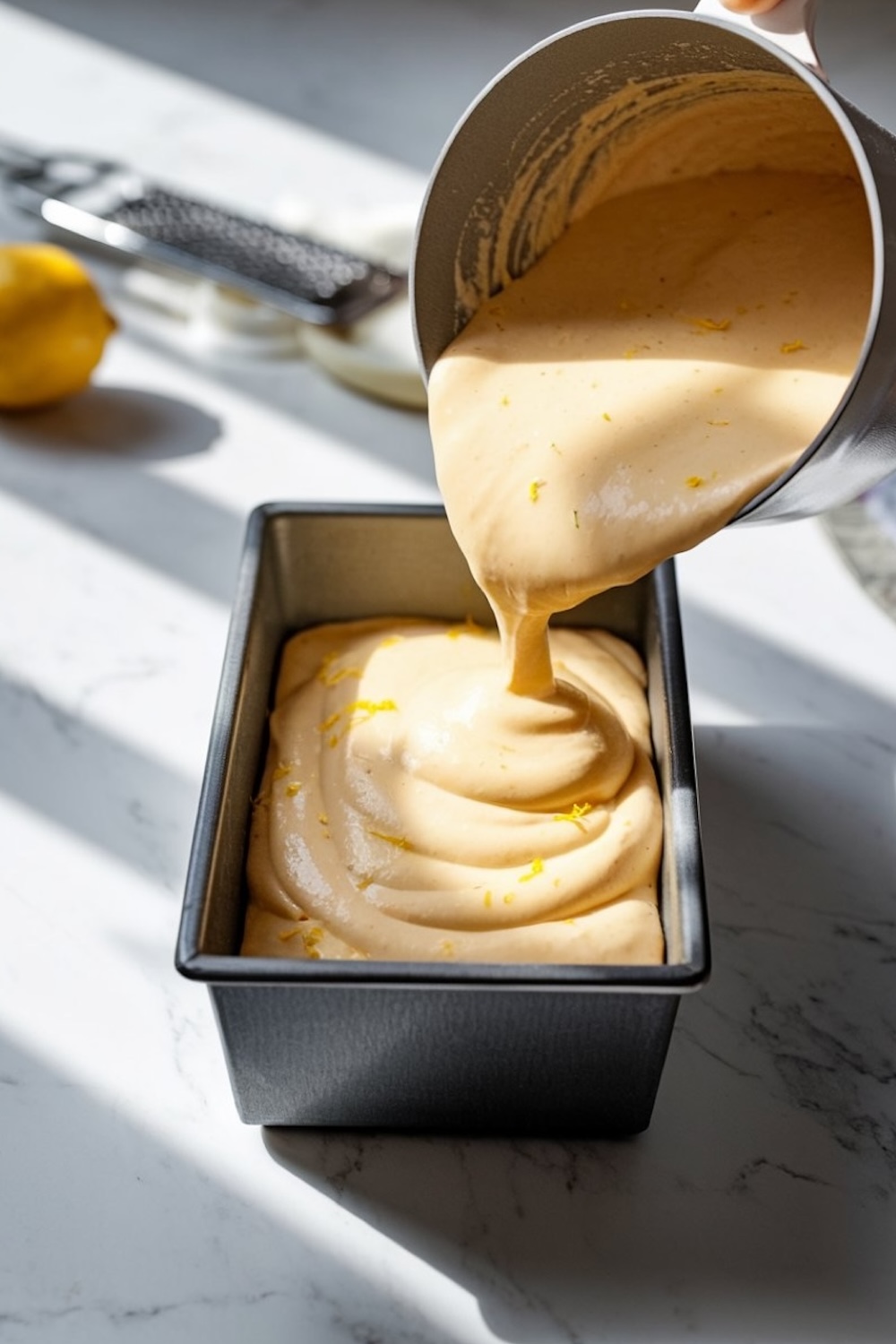
The magic is just as much in the method of this lemon pound cake as it is in the ingredients. Here’s how to make sure each step sets you up for success:
Creaming the Butter and Sugar
Probably the most important thing in making spongy cake is beating the butter and sugar. With the soft butter, whipping it with sugar until it becomes pale and fluffy will take about 3-4 minutes. That whole thing just adds tiny air bubbles, helping your cake rise while it bakes.
Adding Eggs and Flavorings
Now add the eggs one at a time; this keeps the batter smooth. Again, beat in each egg well before adding the next, so that you do not break your emulsion and have a curdled batter. Now, as you add the lemon zest, juice, and vanilla, take in that fabulous perfume of citrus!
Alternating Flour and Milk
To avoid an overly dense cake, add the dry ingredients in three portions, alternating with the milk. Begin and end with the flour mixture, mixing gently between each addition to keep the batter light and prevent overworking the gluten in the flour.
Baking the Perfect Lemon Pound Cake
When your batter is smooth and mixes well, just pour it into a greased and lined loaf pan, then smooth the top. Baking at 350 degrees is perfect because it doesn’t dry out but rather cooks through. If it browns too much on top, you can always throw a piece of foil over the cake for the last 10-15 minutes if you need to.
Bake until a toothpick inserted into the center comes out clean, therefore your cake will not be overcooked and too dry. Let it cool in the pan for about 10 minutes, then transfer to a wire rack to cool down completely. This step is very necessary; otherwise, the glaze will slide off afterward.

Crafting the Lemon Glaze
Yeah, a basic lemon glaze does a great job adding that sweet and tangy kick, really, to the end of a pound cake. Mix some powdered sugar together with fresh lemon juice and then adjust to desired consistency. You want it to be thick enough to stick, yet still thin enough to drizzle on the cooled cake nice and smooth.
Bonus Tips for Lemon Pound Cake Success
- Use Room Temperature Ingredients: This includes butter, eggs, and milk. Room temperature ingredients blend more smoothly, ensuring a consistent batter.
- Avoid Overmixing: Once you add the flour, mix just until combined. Overmixing can lead to a dense cake.
- Test for Doneness: Since ovens vary, check your cake a few minutes before the timer goes off. A toothpick should come out with a few moist crumbs, not wet batter.
- Cool Completely Before Glazing: If the cake is too warm, the glaze will melt right off. Patience pays off here.
Serving Suggestions for Lemon Pound Cake
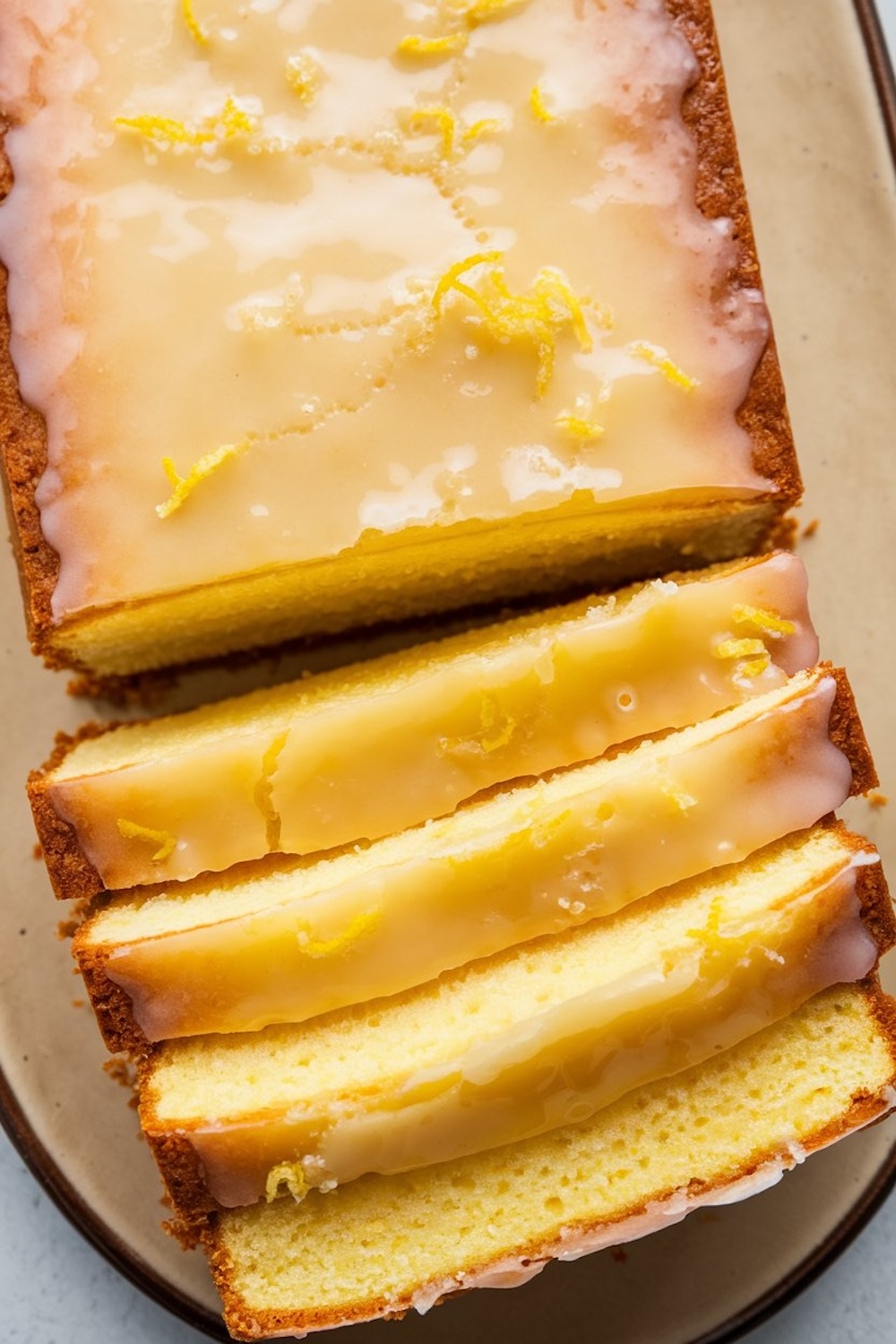
A slice of lemon pound cake is lovely on its own, but you can elevate it further with a few thoughtful accompaniments:
- With Berries: Fresh berries like raspberries or blueberries bring a natural sweetness and color that complement the lemony flavor.
- A Dollop of Whipped Cream: Lightly sweetened whipped cream adds a creamy texture that pairs beautifully with the dense, buttery cake.
- Toasted Coconut or Almonds: For a bit of crunch, sprinkle some toasted coconut or almonds over the glaze.
Ready to Give It a Go?
Homemade lemon pound cake is just magic, plain and simple. Aromas of citrus filling your kitchen, that first tangy-sweet bite. it’s just a different kind of comfort food altogether. I really hope you enjoy making and devouring this recipe as much as I do! Give it a shot? Leave a comment, share a pic, or save this recipe for your next baking adventure!
Lemon Pound Cake Recipe
Course: Cake Ideas8-10
servings15
minutes50
minutes350
kcalIngredients
- For the Lemon Pound Cake:
1 cup (227g) unsalted butter, softened to room temperature
1 1/4 cups (250g) granulated sugar
4 large eggs, room temperature
2 cups (250g) all-purpose flour
1/2 teaspoon baking powder
1/2 teaspoon salt
1/2 cup (120ml) whole milk, room temperature
Zest of 2 large lemons
2 tablespoons fresh lemon juice
1 teaspoon vanilla extract
For the Lemon Glaze:1 cup (120g) powdered sugar
2-3 tablespoons fresh lemon juice (adjust for desired consistency)
Zest of 1 lemon, for garnish (optional)
Steps
- Step 1: Preheat the Oven and Prepare the Pan
- Preheat your oven to 350°F (175°C).
- Grease a 9×5-inch loaf pan and line it with parchment paper, leaving some overhang on the sides for easy removal.
- Step 2: Mix the Wet Ingredients
- In a large bowl, beat the softened butter and granulated sugar together with an electric mixer on medium speed until light and fluffy, about 3-4 minutes. This step helps create that soft and tender texture.
- Add the eggs, one at a time, beating well after each addition. Make sure each egg is fully incorporated before adding the next.
- Mix in the lemon zest, lemon juice, and vanilla extract, blending until combined.
- Step 3: Prepare the Dry Ingredients
- In a separate bowl, whisk together the flour, baking powder, and salt.
- With the mixer on low speed, add the dry ingredients to the butter mixture in three parts, alternating with the milk (beginning and ending with the flour mixture). Mix each addition just until incorporated, being careful not to overmix. The batter should be thick and smooth.
- Step 4: Bake the Cake
- Pour the batter into the prepared loaf pan and smooth the top with a spatula.
- Bake in the preheated oven for 50-60 minutes, or until a toothpick inserted into the center comes out clean or with just a few crumbs. If the top is browning too quickly, tent it loosely with foil during the last 10-15 minutes of baking.
- Remove the cake from the oven and let it cool in the pan for about 10 minutes. Then, use the parchment paper overhang to lift it out and transfer it to a wire rack to cool completely.
- Step 5: Make the Lemon Glaze
- In a medium bowl, whisk together the powdered sugar and 2 tablespoons of lemon juice until smooth. Add more lemon juice, a teaspoon at a time, if you prefer a thinner consistency.
- Once the cake has cooled, drizzle the glaze over the top, letting it run down the sides for a beautiful finish.
- For an extra pop of color and flavor, sprinkle the lemon zest over the glaze.


